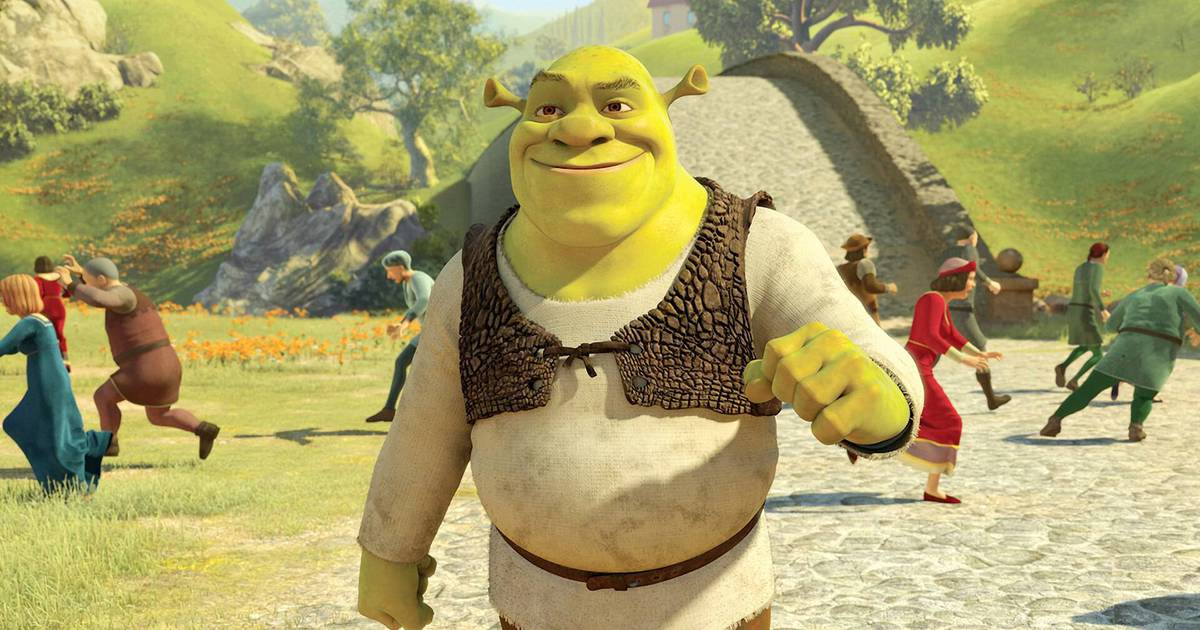In the early 2000s, animated cinema was about to be transformed by a grumpy but undeniably captivating green ogre. “Shrek,” released by DreamWorks Animation in 2001, not only broke fairy tale conventions but also redefined what an animated film could be, both in terms of technique and narrative. This work not only won over critics and the public, grossing millions at the box office, but it also firmly established itself as a pillar of pop culture, influencing countless works that came after it. This essay explores the journey of “Shrek,” from its conception to its lasting legacy.
The Genesis of Shrek
“Shrek” is based on the 1990 book of the same name by William Steig, which tells the story of an ogre who leaves his home to see the world and ends up finding love. DreamWorks' adaptation, however, takes significant liberties, transforming a simple love story into a bold satire that pokes fun at fairy tale clichés while simultaneously embracing their essence.
The choice of Mike Myers to voice Shrek, following the tragic death of the originally cast comedian, Chris Farley, was a game changer. Myers not only brought a distinct Scottish accent to the character, but also imbued Shrek with an emotional depth that contrasted with his gruff exterior. Eddie Murphy as the chatty Donkey, Cameron Diaz as the fearless Princess Fiona, and Antonio Banderas as the charismatic Puss in Boots (introduced in “Shrek 2”), complemented the cast, creating an unforgettable chemistry that became one of the franchise's trademarks. .
Breaking Conventions
“Shrek” stands out for its irreverent approach to fairy tales. Instead of presenting a conventional love story or a flawless hero, the film focuses on flawed characters and situations filled with adult humor and pop culture references. This satire is not just restricted to the characters and plot, but extends to the narrative itself, defying expectations and subverting traditional tropes.
One of the most revolutionary aspects of “Shrek” is how it deals with the concept of beauty and true love. Unlike traditional stories, where physical beauty is often a prerequisite for love and happiness, “Shrek” proposes a more inclusive and realistic vision, where love transcends outward appearances. Fiona's transformation into an ogress, far from being seen as a curse, is celebrated as an expression of her true essence.
Technical Innovations and Impact on Animated Cinema
In addition to its innovative script, “Shrek” was a technical milestone, employing computer animation to create characters and environments with a level of detail and realism previously unheard of in animated films. DreamWorks Animation invested heavily in technology, resulting in a visually stunning film that still remains competitive many years after its release.
The influence of “Shrek” on animated cinema is unquestionable. He paved the way for a new era of films that combine humor, heart and cutting-edge technology, inspiring studios around the world to explore new narrative and visual possibilities in their works.
Legacy and Cultural Influence
The legacy of “Shrek” extends far beyond its technical feats and box office success. The film spawned a successful franchise, including sequels, spin-offs, and even a Broadway musical, solidifying its status as a cultural icon. More than that, “Shrek” is often cited in discussions about the evolution of animated cinema, serving as a case study in how films aimed at both children and adults can be intelligent, entertaining and emotionally resonant.
“Shrek” has also left its mark on pop culture, with its quotes, characters and scenes becoming part of the cultural lexicon. Whether through internet memes or references in other media, “Shrek’s” influence is widespread, attesting to its resilience and enduring appeal.
Conclusion
“Shrek” is more than just an animated film; is a cultural phenomenon that defied convention and redefined what a film in this genre could be. With its sharp humor, warm heart, and insightful commentary on fairy tales and society, “Shrek” has earned a special place in the hearts of viewers of all ages. As we continue to witness “Shrek’s” lasting impact on cinema and pop culture, it’s clear that DreamWorks’ green ogre is truly an animated film legend.


